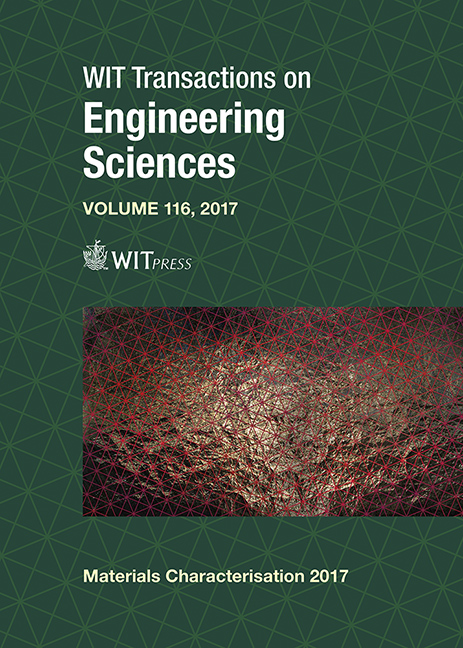DEVELOPMENT OF AN ANALYTICAL SOLUTION MATHEMATICAL MODEL FOR A THERMOPLASTIC STARCH AND LINEAR LOW-DENSITY POLYETHYLENE BLENDS FOR PYROLYTIC DEGRADATION
Price
Free (open access)
Transaction
Volume
116
Pages
7
Page Range
113 - 119
Published
2017
Size
311 kb
Paper DOI
10.2495/MC170111
Copyright
WIT Press
Author(s)
SULTAN M. AL-SALEM, ALI BUMIJDAD, ABDULREHMAN KHAN, FAJER A. AL-TURKI
Abstract
The increase in the use of polymeric articles has led to the accumulation of large amounts of plastic solid waste (PSW) over recent decades. Proper methods must be implemented to treat PSW, such as the process of thermal degradation, leading to the recovery of highly desirable chemicals. Attention has shifted to biodegradable materials, due to their effectiveness in reducing waste and their role as a technology competing with conventional recycling methods. However, this will also result in an accumulation of such materials in the PSW stream, which can be further treated by chemical or thermal means. In this work, low density polyethylene (LLDPE) blends were compounded using 20 wt.% and 40 wt.% of Poly Starch None (PSN), with the aim of examining their degradation kinetics. An analytical solution was also developed for evaluating the kinetic parameters of the thermal degradation reaction of the linear low density polyethylene (LLDPE) and PSN blends. The main objective of this work was to study the degradation kinetics of starch based biodegradable polymers and, by so doing, to make available to consumers a solution to the accumulation of PSW in Kuwait, without affecting the environment. The average apparent activation energy (Ea) calculated was determined to be 150 and 200 kJ mol-1 for the 20 wt.% and 40 wt.% blends, respectively, which was within the acceptable ranges for degradation kinetics.
Keywords
starch, kinetics, degradation, polymeric blends, apparent activation energy (Ea)





